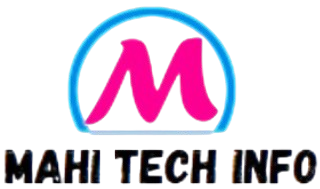In recent years, wearable technology has revolutionized the healthcare and wellness sectors. Devices like smartwatches, fitness trackers, and biometric sensors have become essential tools for individuals seeking to optimize their health routines. Among the various applications of wearable technology, one that has gained considerable attention is its role in evaluating the benefits of 2동탄 출장맛사지 massage therapy. This fusion of tech and traditional wellness practices offers promising insights into how therapeutic interventions affect the body, providing a more detailed understanding of their effects.
Understanding Wearable Technology’s Role
Wearable technology refers to devices worn to monitor various physiological parameters. These gadgets can track different metrics, including heart rate, sleep patterns, physical activity levels, stress levels, and even muscle tension. The ability to collect real-time data has opened new doors for understanding the effects of various health practices, including massage and physical rehabilitation. Traditionally, the benefits of massage were largely subjective, with individuals reporting a feeling of relaxation or pain relief. However, with wearable devices, it’s now possible to measure physiological responses such as heart rate variability, muscle relaxation, and blood circulation. This has led to a more objective approach to evaluating the efficacy of different massage techniques.
How Wearables Assess the Benefits of 2동탄 출장맛사지 Therapeutic Massage
Wearable devices provide detailed and real-time feedback about the body’s response during and after massage sessions. One of the primary ways they assess the effectiveness of therapy is by monitoring changes in heart rate variability (HRV). HRV measures the variation in time between each heartbeat and is a strong indicator of relaxation and stress recovery. A higher HRV suggests that the body is relaxed, which is commonly associated with the benefits of therapeutic touch. Some devices are equipped with sensors that can detect muscle activity and tension. For instance, electromyography (EMG) sensors are used to measure the electrical activity of muscles. During a massage, these sensors can detect the release of muscle tension, which is one of the key benefits of massage. By tracking these physiological responses, wearables can provide quantifiable data that supports the subjective experience of relaxation and pain relief.
Monitoring Stress and Recovery
Stress management is one of the significant benefits associated with therapeutic massage. Many wearable devices can track stress levels by monitoring changes in the body’s autonomic nervous system. The sympathetic nervous system triggers the fight-or-flight response, and the parasympathetic nervous system, which controls relaxation, is closely linked to stress responses. Wearables often feature sensors that measure galvanic skin response (GSR), which indicates how the body’s skin reacts to stress. These readings can show how quickly the body returns to a relaxed state after a 2동탄 출장맛사지 massage, providing a clear picture of its stress-relieving effects. Additionally, wearable technology can help evaluate how the body recovers from physical exertion. A massage may speed up recovery for individuals who experience muscle soreness or tension from physical activity or business trips. Wearables can monitor muscle recovery time by measuring muscle stiffness and joint mobility, making it easier to track whether a particular type of massage effectively reduces these symptoms.
Impact on Business Trips and Travel Stress
Physical and mental stress can build up quickly for frequent travelers, especially those on business trips. Long flights, irregular sleep patterns, and time zone changes can cause physical discomfort and fatigue. Wearables can help assess the benefits of incorporating massage therapy into a travel routine by tracking parameters like sleep quality, muscle relaxation, and stress levels. For instance, travelers may use a wearable device to track their sleep before and after a massage. The device can reveal improvements in sleep duration and quality, which are often enhanced by 2동탄 출장맛사지 massage due to its ability to stimulate the parasympathetic nervous system and reduce cortisol, the stress hormone levels. Additionally, travel-induced muscle stiffness can be alleviated through targeted massages, which wearables can track by measuring muscle tension or flexibility changes.
Personalized Recommendations and Tracking Progress
Wearable technology also plays a role in personalizing massage therapy for individual needs. Wearables can offer insights and recommendations on optimal massage techniques based on the data collected during each session. For instance, if a device detects higher-than-normal muscle tension in certain body areas, it can suggest focusing on those specific muscles during the next therapy session. This tailored approach ensures that each massage session is aligned with the individual’s unique body needs and health goals. Moreover, wearables offer the advantage of tracking long-term progress. For individuals who undergo regular therapeutic massages, wearables can store data over time, allowing for a comprehensive overview of improvements in various areas such as muscle 2동탄 출장맛사지 relaxation, stress levels, and overall well-being. This long-term tracking can provide valuable insights for clients and massage therapists, helping refine techniques and measure cumulative benefits.
The Future of Wearable Technology and Wellness
As technology continues to evolve, the potential for wearables to enhance the massage therapy experience is vast. Future innovations could lead to even more sophisticated devices that provide deeper insights into the effects of treatments. For example, future wearables may offer enhanced biometric sensors that track more detailed aspects of the body’s response, such as blood flow and oxygen saturation. This would allow for even more precise and accurate assessments of how massage therapy affects the body. Additionally, integrating artificial intelligence (AI) could make it easier for wearables to analyze large datasets and provide predictive insights. For instance, AI could analyze patterns over time and predict when an individual will most likely benefit from a massage based on their stress levels, muscle tension, and overall health. This could lead to a more proactive approach to wellness, where individuals are given personalized recommendations based on their unique health metrics.
Final Thoughts
Wearable technology has brought a new level of sophistication to understanding the benefits of treatments like 2동탄 출장맛사지 massage. By providing real-time data on muscle relaxation, stress recovery, and overall wellness, wearables offer a scientific approach to evaluating these therapies. Whether for frequent travelers, athletes, or anyone seeking stress relief, wearable technology is poised to play an even more significant role in enhancing the massage therapy experience, offering personalized insights and improving overall health outcomes. As wearable devices evolve, their potential to track and optimize wellness routines will only increase, making them an indispensable tool for anyone looking to improve their well-being.

